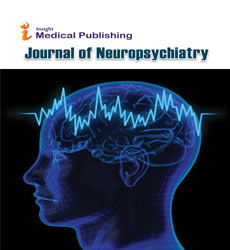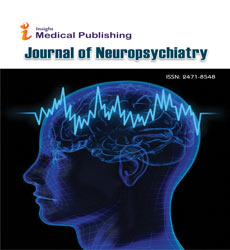Othello Syndrome Secondary to Subthalamic Deep Brain Stimulation in ParkinsonÃÆâÃâââ¬Ãâââ¢s Disease
Emilia Soltan Anna, Antosik-Wojcinska, Dariusz Koziorowski, Henryk Koziara and Tomasz Mandat
DOI10.21767/2471-8548.10001
Emilia Soltan1, Anna Antosik-Wojcinska2, Dariusz Koziorowski3, Henryk Koziara1,4 and Tomasz Mandat1,4*
1Department of Neurosurgery, Institute of Psychiatry and Neurology, Warszawa, Poland
2Department of Neurosurgery, Maria Sklodowska-Curie Memorial Oncology Center, Warszawa, Poland
3Department of Neurology, Health Sciences Division, Medical University of Warsaw, Warszawa, Poland
4Department of Psychiatry, Institute of Psychiatry and Neurology, Warszawa, Poland
- *Corresponding Author:
- Tomasz Mandat
Department of Psychiatry, Institute of
Psychiatry and Neurology, Warszawa, Poland
Tel: 48225462360
E-mail: tomaszmandat@yahoo.com
Received date: June 07, 2016; Accepted date: July 11, 2017; Published date: July 13, 2017
Citation: Soltan E, Antosik Wojcinska A, Koziorowski D, Koziara H, Mandat T (2017) Othello Syndrome Secondary to Subthalamic Deep Brain Stimulation in Parkinson’s Disease. J Neuropsychiatry Vol. 1 No. 1:1. doi:10.21767/2471-8548.10001
Copyright:2017 Tomasz M. This is an open-access article distributed under the terms of the Creative Commons Attribution License, which permits unrestricted use, distribution, and reproduction in any medium, provided the original author and source are credited.
Abstract
Deep brain stimulation (DBS) is established method of Parkinson’s disease(PD) treatment. The stimulation of the limbic portion of subthalamic nucleus (STN) might devise psychotic symptoms. PD psychosis may be related also to drug intake, especially dopamine agonists(DA). Authors present 36-year old PD patient treated with STN DBS with delusions of the marital infidelity that appeared 3 months after initiation of the stimulation and confining of l-dopa and DA to zero. Those symptoms were identified as Othello-like syndrome (OLS) and were successfully treated with both quetiapine and reprogramming of the stimulation. At one-year follow-up no recurrence of the psychotic symptoms were noted. The patient required no pharmacotherapy.
Keywords
Parkinson’s disease; Othello syndrome; Deep brain stimulation
Introduction
Deep brain stimulation (DBS) is widely used method of Parkinson’s disease(PD) treatment. Psychotic symptoms frequently go parallel to motor symptoms of PD and drug intake. Dopamine agonists (DA) were identified as the most relevant risk factor for PD psychosis [1]. It has been previously reported that stimulation of the limbic portion of subthalamic nucleus (STN) might devise psychotic behavior like: sadness, tearfullness, anxiety, hipomania or mania [2,3].
Materials and Methods
Thirty-six-year-old PD male patient, pharmacologically treated with l-dopa for 8 years. First symptoms of PD: tremor and bradykinesia he observed when he was about 18 years old. He was diagnosed with PD at the age of 28. Patient presented all motor symptoms of PD: tremor, rigidity and bradykinesia. Two point mutations of the gene PARK2: p.K211N/p.R275W were confirmed. Unified Parkinson’s Disease Rating Scale (UPDRS), Brief Psychiatric Rating Scale(BPRS) and Positive and Negative Syndrome Scale(PNSS) were used pre-and postoperatively to evaluate patient’s motor symptoms and psychiatric state.
Patient was qualified to STN DBS according to CAPSIT-PD criteria, that included neuropsychological evaluation [4]. Patient also suffered from dyskinesias. The patient underwent bilateral STN DBS.
Results
The stimulation was initiated 4 weeks after surgery at C+, 0-, 1- 1,5 V, 130 Hz, 60 μs bilaterally. The amplitude of the stimulation was increased up to 2,2 V after two months and motor symptoms improved significantly (UPDRS part III medication OFF from 46 before surgery dropped to 4 with stimulation ON and medication OFF) that allowed patient to confine his l-dopa to zero. On the third month patient reported with delusions of the marital infidelity and dysphoria that he was aware of. He was aggressive, he destroyed the telephone of his wife. He was convinced that his wife has an affair with another PD patient, who he met few years before. The symptoms accreted over one week after change of the settings to: BPRS from 18 before surgery to 47 and PANSS from 32 before surgery to 87. Psychiatrists diagnosed Othello-like syndrome (OLS). Quetiapine was incorporated to the treatment (25 to 100 mg daily). 24 hours after turning off of the DBS the motor symptoms of PD reappeared (UPDRS part III OFF 38) and psychotic symptoms remained, but the patient was less dysphoric and non-agressive. DBS was reprogrammed to C+, 2-, 3- 1,5 V, 130 Hz, 60 μs bilaterally. After three months, psychotic symptoms vanished. Ten months after implantation of DBS quatiapine was discontinued. One year after surgery the setting were set: C+, 2-, 3- 2,0 V, 130 Hz, 60 μs bilaterally with UPDRS part III off medication- 7 and no psychotic symptoms (BPRS 16, PANSS 36). All the measured parameters are showed in Table 1.
| Initial status (surgery) | ÃÆââ¬Å¡Ãâà1 month | 3 months | 4 months (OLS) | 12 months | |
|---|---|---|---|---|---|
| Settings | DBS OFF | C+,0-,1-1,5V, 130 Hz, 60 ÃÆââ¬Å¡Ãâõs | C+,0-,1,2,2V, 130 Hz, 60 ÃÆââ¬Å¡Ãâõs | C+,2-,3,-1,5V, 130 Hz, 60ÃÆââ¬Å¡Ãâõs | C+,2-,3-2,0 V, 130 Hz, 60ÃÆââ¬Å¡Ãâõs |
| UPDRS | 46 (ON medication) | 14 DBS ON medication reduced (half of previous dose of l-dopa) | 4 DBS ON (OFF medication) | 16 DBS ON (OFF medication) | 7 DBS ON (OFF medication) |
| BPRS | 18 | Not evaluated | Not evaluated | 47 | 16 |
| PANSS | 32 | Not evaluated | Not evaluated | 87 | 36 |
Table 1: Measured parameters of changes in the motor and psychiatric condition.
Discussion
The term “Othello syndrome” (OS) was first introduced in 1954. The term might not be accurate because Othello was rather deceived by Desdemona than deluded and in literature the synonym “delusional or morbid jealousy” is common [5]. Preoccupation of the subject’s intrusive thoughts, delusional suspicions about partner’s infidelity, seeking of confirmation of this preoccupations are the most common psychopathologic manifestations of OS [6]. Aggressive behavior, oral and physical violence if presented are highly associated with risk of attempted suicide and homicide, 20% and 17% respectively [7].
OS is not a psychiatric disorder, but syndrome or symptom which occurs in many psychiatric conditions: personality disorders, chronic mental illnesses, alcoholism, substance misuse, organic brain lesions [8]. The prevalence of delusional jealousy has been reported as 1.1% in psychiatric inpatients and 7% in patients with neurobiological (organic) mental disorder [9]. The highest prevalence of OS occurs in demented patients, reaching about 15% of patients [10]. Presented case met most of criteria of delusional disorder – jealous type included in DSM-IV-TR, although cannot be classified among organic psychoses like other OS in PD patients, and was named OLS to distinct DBS-related etiology [11].
OS was previously reported in PD patients treated conservatively [12,13]. In almost all reported cases of OS atypical neuroleptics and withdrawal of DA or medications associated with onset of OS was recommended [12-14]. The intervals between the initiation of treatment with anti-parkinsonian medications and the onset of OS were published once in a group of 3 patients and prolonged from 4 months to 4 years [13]. In presented case, the interval between reprogramming of DBS parameters and onset of OLS was about one month, which proves undoubted connection between DBS and OLS symptoms.
The neurodegenerative patients (including PD patients) with OS showed greater grey matter loss predominantly in the dorsolateral frontal lobes, particularly in superior frontal gyri, and right posterior lateral temporal lobe compared to the matched neurodegenerative patients without delusions [15]. In presented case, we have not found any imaging features in preand postoperative T1 weighted volumetric MRI characteristic for OS in PD patients.
Conclusions
The risk of psychotic symptoms and mood appearance in PD, especially after STN DBS should yield to take psychological evaluation regularly not only before surgery, but with stimulation as well. Presented case shows that psychotic symptoms may be successfully treated with antipsychotic drugs without interrupting the stimulation, but reprogramming is needed [2,16,17]. There are no recommendations to treat OS in PD patients, but should be highlighted that OS in PD should not be treated with typical neuroleptics, but through the administration of atypical neuroleptics, owing to the fact that several studies reveal that the treatment with typical neuroleptics worsens motor symptoms of PD [18].
References
- Zahodne LB, Fernandez HH (2008) Pathophysiology and treatment of psychosis in Parkinson's disease: a review. Drugs Aging 25: 665-682.
- Voon V, Saint-Cyr J, Lozano AM (2005) Psychiatric symptoms in patients with Parkinson disease presenting for deep brain stimulation surgery. J Neurosurg 103: 246-251.
- Skuban T, Flohrer J, Klosterkötter J, Kuhn J (2011) Psychiatric side effects of deep brain stimulation in Parkinson's disease. Fortschr Neurol Psychiatr79: 703-10.
- Defer GL, Widner H, Marié RM, Rémy P, Levivier M (1999) Core assessment program for surgical interventional therapies in Parkinson's disease (CAPSIT-PD). Mov Disord 14: 572-84.
- Shepherd M (1961) Morbid jealousy: Some clinical and social aspects of a psychiatric syndrome. J Ment Sci 9: 687-753.
- Mooney HB (1965) Pathologic jealousy and psychochemotherapy. British Journal of Psychiatry 111: 1023-1042.
- Kingham M, Gordon H (2004) Aspects of morbid jealousy. Advances in Psychiatric Treatment 10: 207-215.
- Soyka M, Naber G, Völcker A (1991) Prevalence of delusional jealousy in different psychiatric disorders: An analysis of 93 cases. Br J Psychiatry 158: 549-553.
- Tsai SJ, Hwang JP, Yang CH (1997) Delusional jealousy in dementia. J Clin Psychiatry 58: 492-494.
- American Psychiatric Association (2000) Diagnostic and Statistical Manual of Mental Disorders. American Psychiatric Press, Washington. 4th edn.
- Cannas A, Solla P, Floris G, Tacconi P, Marrosu F, et al. (2009) Othello syndrome in Parkinson disease patients without dementia. Neurologist15: 34-36.
- Kataoka H, Kiriyama T, Eura N, Sawa N, Ueno S (2014) Othello syndrome and chronic dopaminergic treatment in patients with Parkinson's disease. Parkinsonism Relat Disord 20: 337-339.
- Georgiev D, Danieli A, Ocepek L, Novak D, Zupancic-Kriznar N, et al. (2010) Othello syndrome in patients with Parkinson's disease. Psychiatr Danub 22: 94-98.
- Graff-Radford J, Whitwell JL, Geda YE, Josephs KA (2012) Clinical and imaging features of othello’s syndrome. European journal of neurology: The official journal of the European Federation of Neurological Societies 19: 38-46.
- Widge A, Agrawal P, Giroux M (2013) Psychosis from subthalamic nucleus deep brain stimulator lesion effect. Surg Neurol 4: 7.
- Umemura A, Oka Y, Okita K (2011) Subthalamic nucleus stimulation for Parkinson disease with severe medication-induced hallucinations or delusions. J Neurosurg 114: 1701-1705.
- Friedman JH, Factor SA (2000) Atypical antipsychotics in the treatment of drug induced psychosis in Parkinson’s disease. Mov Disord 15:201-211.

Open Access Journals
- Aquaculture & Veterinary Science
- Chemistry & Chemical Sciences
- Clinical Sciences
- Engineering
- General Science
- Genetics & Molecular Biology
- Health Care & Nursing
- Immunology & Microbiology
- Materials Science
- Mathematics & Physics
- Medical Sciences
- Neurology & Psychiatry
- Oncology & Cancer Science
- Pharmaceutical Sciences
